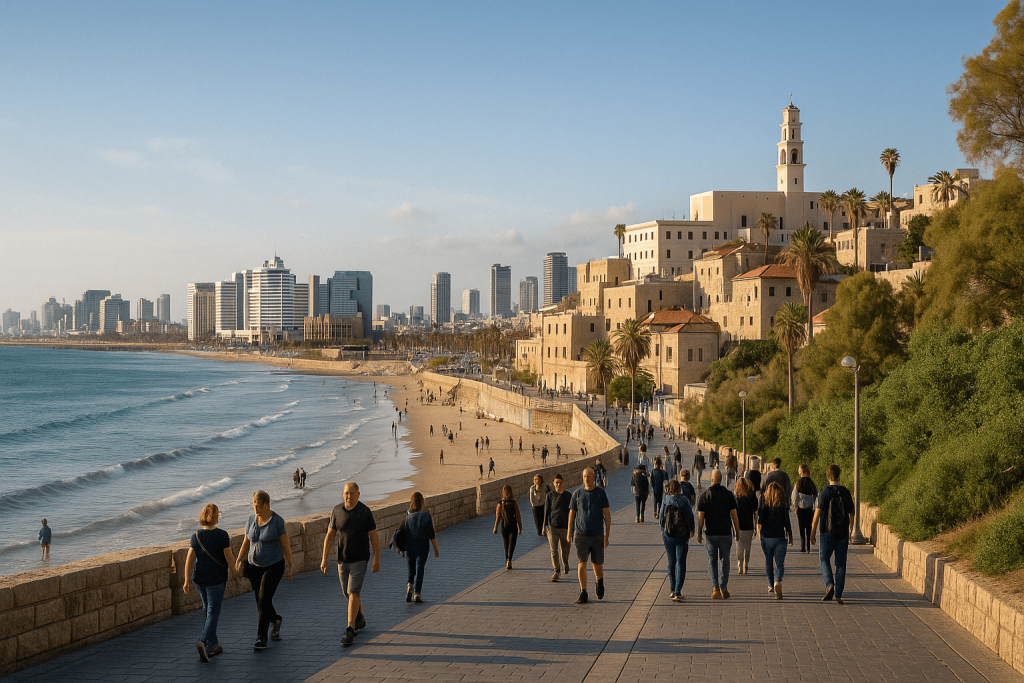
Lebanon’s Qadisha Valley remains one of those rare travel gems that seems almost untouched by modern tourism. Tucked away between rugged mountains and lush greenery, this UNESCO World Heritage Site is home to picturesque villages, ancient monasteries, and hidden trails. Here, travelers step into a world of calm and beauty, away from the noise and bustle of everyday life. Trails thread their way from the valley floor to villages perched high above, revealing awe-inspiring views and friendly communities. Every village offers something unique, from ancient heritage to culinary surprises. Ready to discover five astonishing villages hidden in Qadisha Valley worth every step upward?
1. Hadchit: The Village on the Cliff Edge
Set dramatically on the lip of a steep cliff, Hadchit is one of the oldest and most striking villages in Qadisha Valley. Strolling through the village, you’ll encounter meticulously restored stone houses and churches, some nearly a thousand years old. Visit Saint Romanos Church to appreciate beautifully preserved frescoes that speak of devotion and craftsmanship dating back eight centuries. Don’t miss the panoramic view from the village edge, especially at sunrise, when the valley below gleams gold in the early morning haze.
Practical tip: Wear comfortable hiking shoes; the steps here can be steep and somewhat uneven. Reward yourself afterward with lunch at Al Saha Café, known locally for delicious Lebanese dishes made from fresh, locally-sourced ingredients.
2. Diman: Spiritual Serenity With a View
Diman, home to the Maronite patriarch during the warmer months, impresses visitors with its deeply spiritual atmosphere and breathtaking views. At the heart of Diman sits the summer Patriarchate, a beautiful red-roofed building overlooking a vast valley panorama. Do visit the Patriarchate Museum, where you’ll find an astonishing collection of religious artifacts and historical treasures.
Travel tip: Diman provides excellent trails for gentle hiking and contemplation. Bring your camera; on clear days, the views stretch across the valley all the way to the Mediterranean Sea, making photographic memories easily achievable.
3. Bcharre: Gateway to Cedars and Heritage
Lively and engaging, Bcharre is perhaps the most bustling and accessible of Qadisha’s villages. This mountain town is the birthplace of acclaimed poet Khalil Gibran, whose timeless poetry inspires visitors worldwide. Explore the Gibran Museum, housed in the former monastery of Mar Sarkis, to admire meaningful artworks, manuscripts, and personal belongings dedicated to the writer’s life.
Insider tip: Bcharre makes an excellent base to explore Lebanon’s majestic cedar forests (Al Arz). Hire a local guide who can guide you through hidden forest paths, where you can walk quietly among thousand-year-old trees and reflect in peace.
4. Hasroun: Flowered Balconies and Friendly Smiles
Hasroun greets visitors with its charming red-tiled stone houses and balconies overflowing with bright flowers. Nicknamed the “Rose of the Mountain,” this pretty village feels like stepping into the past. Taste fresh manakish, local flatbread topped with zaatar (thyme and spices) or cheese, available warm in any of Hasroun’s welcoming bakeries.
Useful advice: Visit the Hasroun Sunday market, which offers colorful produce, handcrafted gifts, sweets, and fresh pastries. Engage with vendors; it’s a fantastic opportunity to chat with the villagers and learn more about their daily lives.
5. Blaouza: Best-Kept Secret of the Valley
Smaller and quieter than its neighbors, Blaouza offers visitors a chance to truly disconnect from busy routines. Ancient stone pathways lead hikers into lush valleys and up intriguing routes dotted with small chapels and shrines. Wander up to the Church of Saint Saba, known for its peace and serenity, filling visitors with calmness and contemplation.
Practical note: While staying overnight in Blaouza, opt for a local family-owned guesthouse to experience genuine hospitality. Evening chats with the hosts over cups of steaming Lebanese herbal tea often become treasured memories.
6. Hiking Wisdom: Essential Information for Valley Explorers
Now that you’re eager to set foot on this spectacular terrain, let’s dive into some practical hiking wisdom. Trails in Qadisha vary in difficulty—from gentle strolls through forests to demanding ascents among rocky cliffs. Always bring bottled water, especially during summer, as mountain hikes can quickly dehydrate even seasoned walkers.
Insider knowledge: Weather conditions can quickly change at these mountain ranges. Even in summer, pack layers—including a light weatherproof jacket—to ensure you’re prepared for sudden temperature drops or unexpected showers. Maps and clearly marked trail information can be limited, so downloading apps like Maps.me or hiring a local guide proves essential to safely navigating hidden trails.
7. Authentic Culinary Delights: What to Eat and Drink
Lebanese cuisine finds perfect expression in the Qadisha villages, where dining experiences seem to perfectly complement the surroundings. Embrace traditional mountain dishes such as Kibbeh Nayyeh (finely ground raw lamb mixed with herbs and spices) and Shish Barak (small dumplings in creamy yogurt sauce topped with fried garlic).
Must-try experience: Treat yourself to authentic Lebanese mezze at Le Montagnard Restaurant in Bcharre, popular for flavorful dishes and reasonable prices. Pair your meal with local Lebanese wine, celebrated worldwide for its exquisite aroma and unique taste.
8. Accommodation Essentials: Where to Stay
Deciding where to stay during your exploration matters equally. While larger villages like Bcharre offer hotels and conventional guesthouses, choosing cozy guesthouses in smaller villages like Blaouza or Hadchit provides authentic experiences and peaceful settings away from the usual tourist crowd.
Special tip: Book your rooms ahead during high-season weekends and holidays, as accommodations along popular hiking trails quickly reach full occupancy. Airbnb options also abound, with many hosts offering unique accommodations filled with local charm.
9. Embrace Local Culture: Events and Traditions Worth Celebrating
Each village of Qadisha Valley boasts rich traditions that travelers can easily experience. Throughout the year, local festivals celebrate religious events, harvest seasons, folklore, and local saints. Attending a village feast provides an unforgettable opportunity to join locals in appreciating food, dance, and genuine hospitality.
Important to know: August and September offer peak festival season, with celebrations such as the Feast of Assumption drawing both pilgrims and international visitors to multiple villages. Don’t hesitate to join in; locals warmly embrace visitors interested in their traditions, making this experience truly valuable.
10. Practical Transport Tips: Accessing Qadisha
Getting to Qadisha Valley means navigating winding mountain roads but don’t let this deter you. The closest major town offering regular bus routes and taxi services is Tripoli. From there, taxis or rented cars become the most feasible means of exploring freely at your own pace.
Travel hack: To explore the valley at leisure, renting a small SUV or car with good ground clearance is highly recommended. Free maps provided online by Lebanon’s tourism websites and downloadable GPS apps will help you confidently handle navigation, so you’ll spend more energy on village adventures and less on figuring out complicated directions.
Exploring these hidden gems in Lebanon’s enchanting Qadisha Valley makes every challenging step upward invaluable. Whether you wish for solitude, spiritual enrichment, authentic cultural experiences, or scenic masterpieces, these villages thoughtfully deliver. Get your hiking shoes, your sense of adventure, and remember—some destinations genuinely are worth climbing mountains for.


